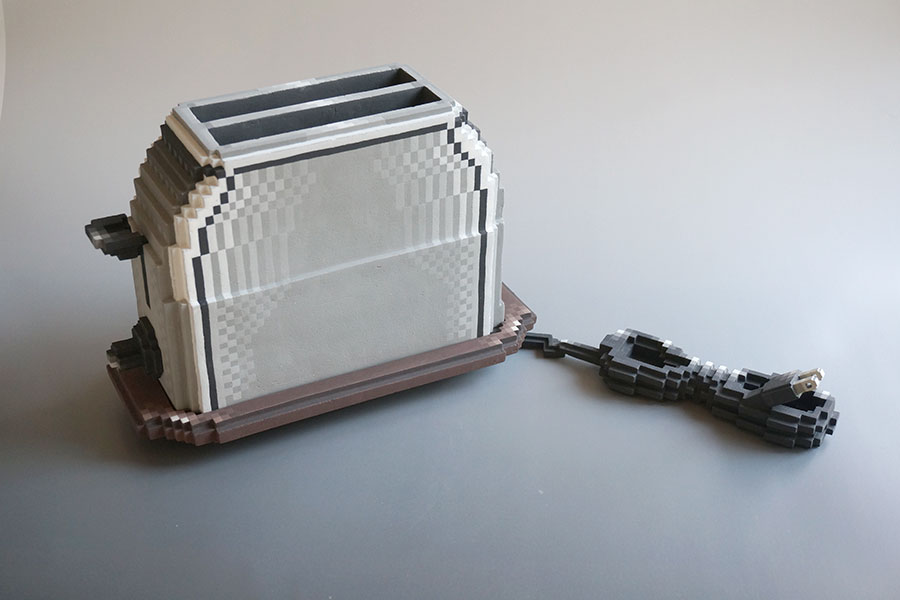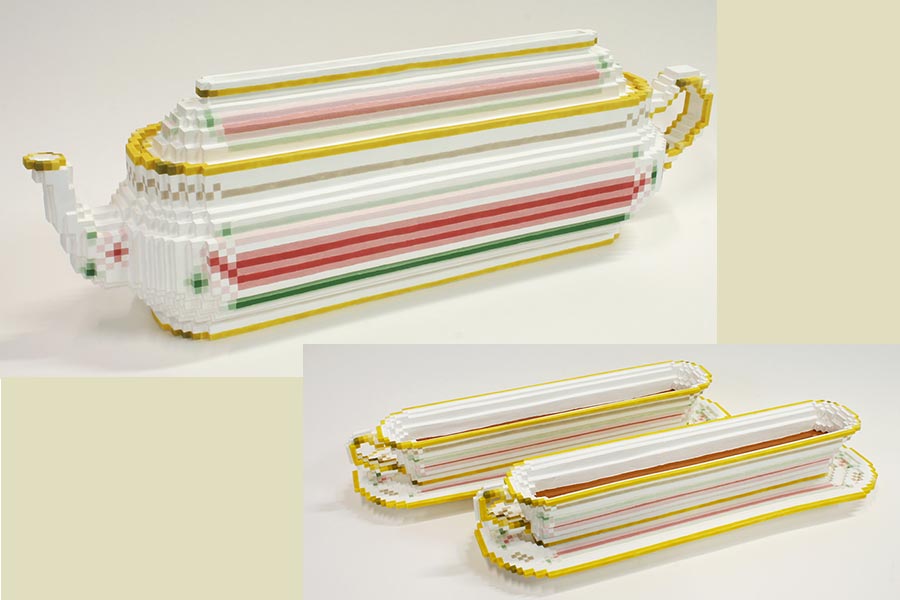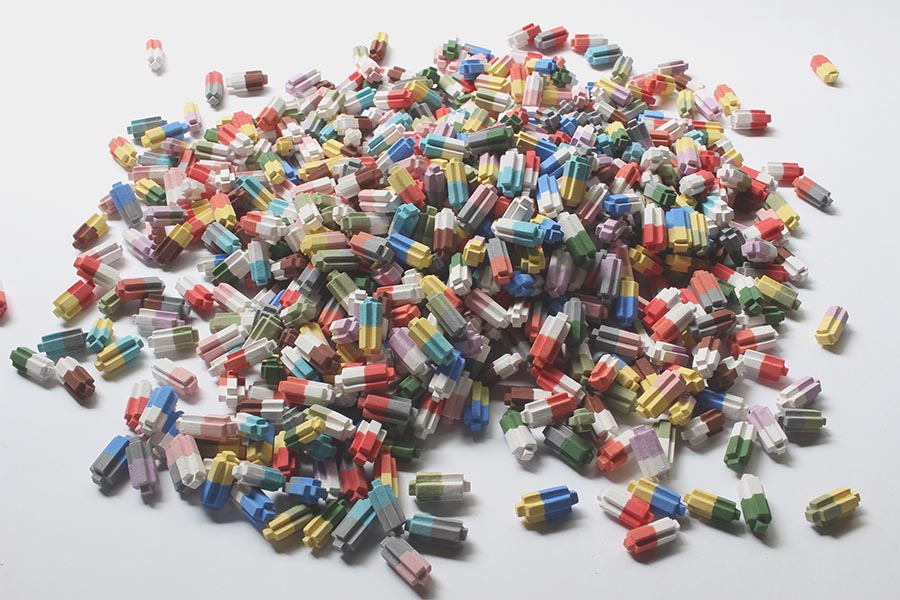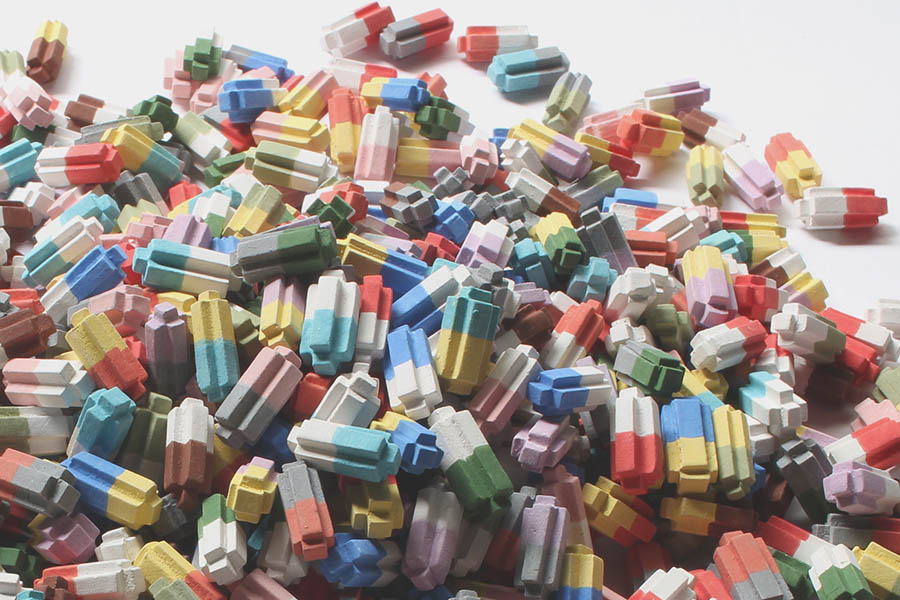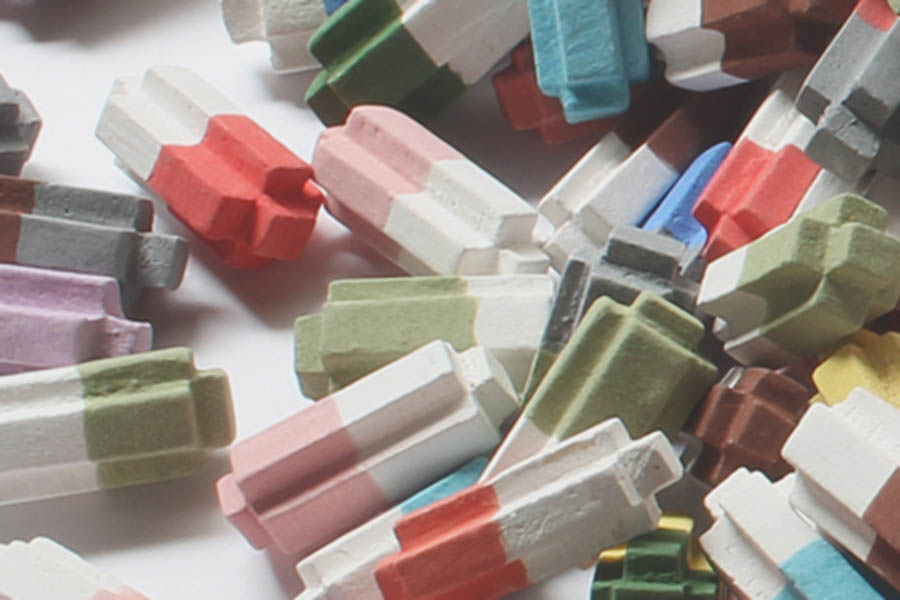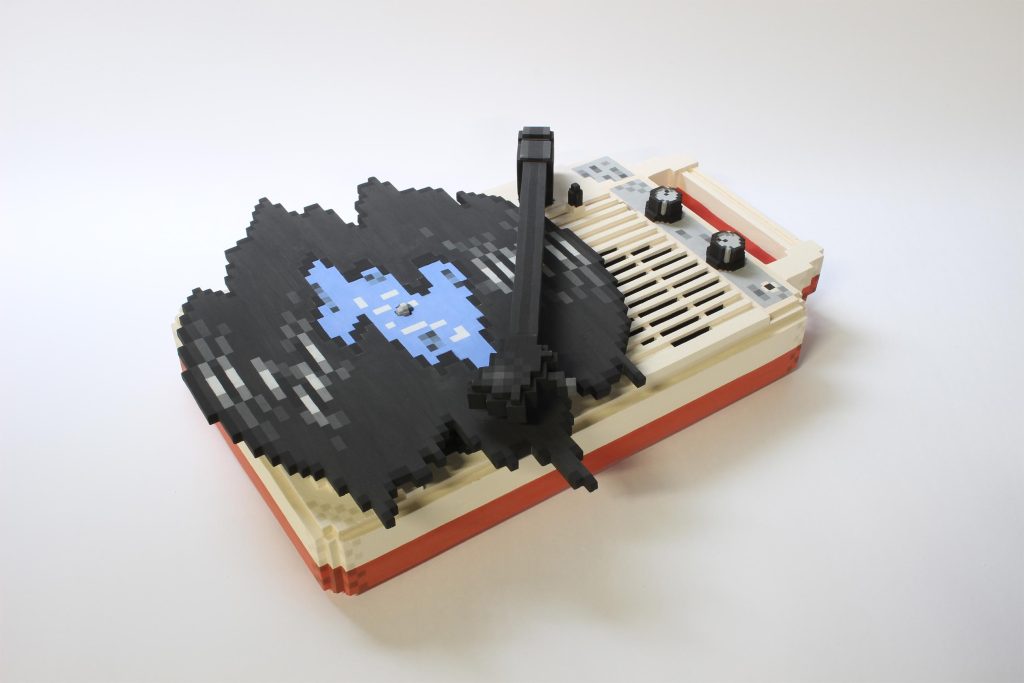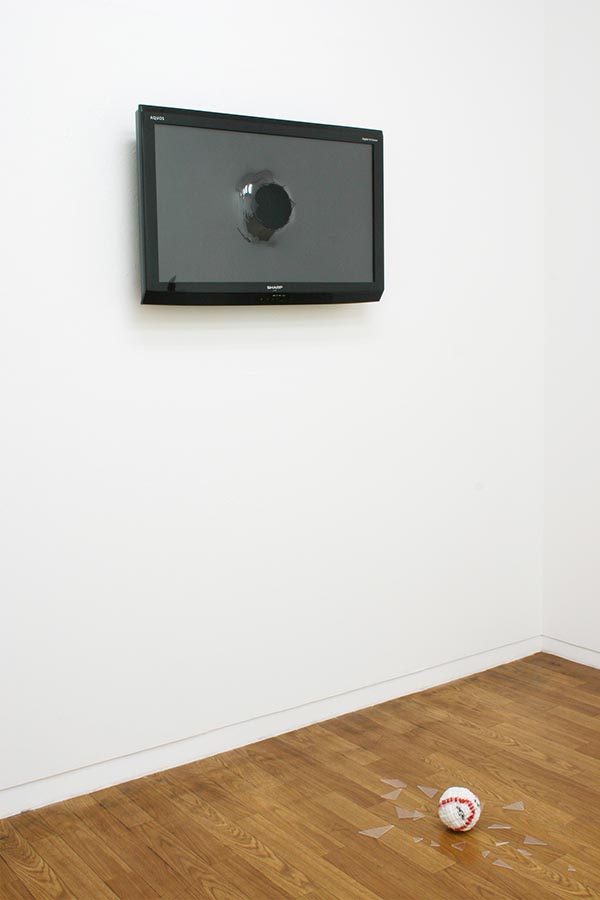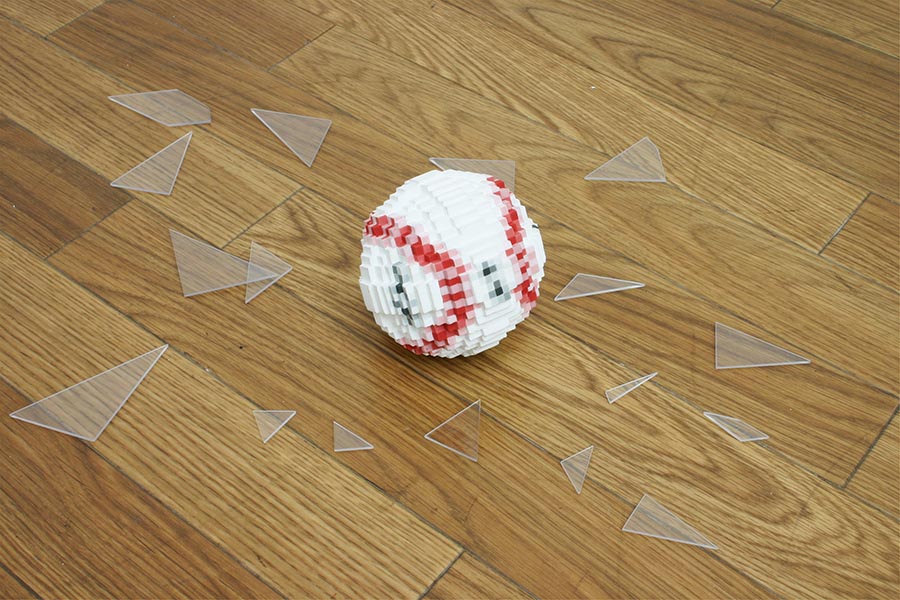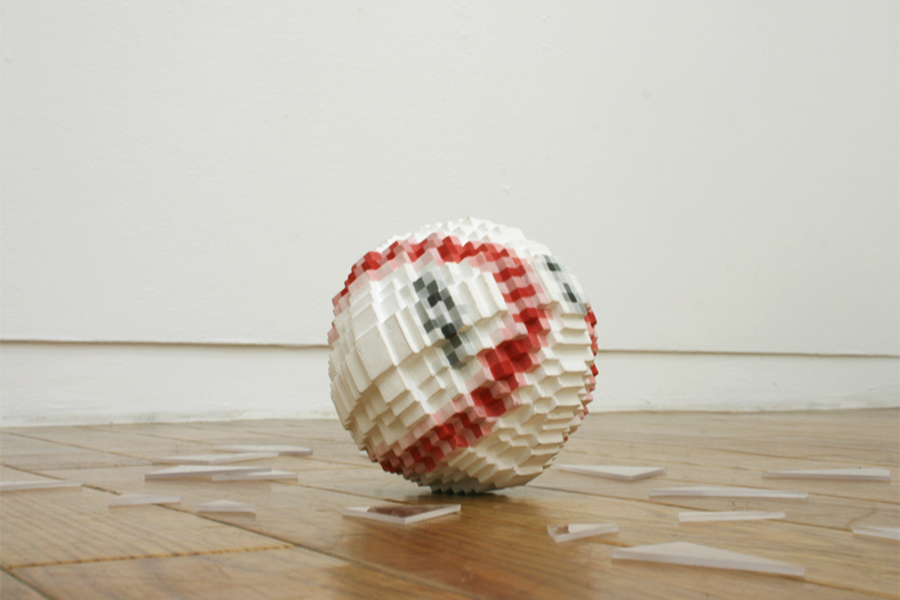Ceramic Sculptures: Low Pixel CG Series
Introduction by Keiko Fukai
When you look at the images of Masuda’s ceramic sculpture on the screen of electric devices, you may think they are bad photos that don’t have enough resolution. But you shouldn’t complain about the images, because Masuda’s pieces were made to look exactly like what you saw on the screen. The idea of Masuda’s works comes from the low pixel icons in the home computer games that dominated the 1980s internationally.
Masuda’s ceramic sculptures are filled with humor, surprise and originality, so that people can enjoy them by just looking at them. However, it is important to remember that Masuda wants to express an interesting concept through his whimsical sculpture.
When artwork is created out of unexpected material, or uses unusual motifs or forms, people are surprised and often confused. Masuda suggests that this confusion comes from the preconceived notions people have about ceramics. In order to make people rethink their preconceived notions, Masuda tries to remove from his pieces all the customary characteristics of ceramics, like the firing effect, glaze, curved line or functionality.
However, Masuda’s pieces do inherit some characteristics of traditional Japanese works of art; for example, he focuses on intricate details and he employs the kind of humor we often observe in some NETSUKE and UKIYOE woodblock prints. This dichotomy is visible in the appearance of his sculptures as well. The motifs of Masuda’s sculpture exist in a two-dimensional world, but he expresses them in three-dimensional forms.
The boundaries within the arts has become blurred in recent years, so it is not surprising that a ceramic artist, like Masuda, has emerged with his unique concept that hopefully will be appreciated in a variety of ways.
Home TV games that appeared in the 1980s had a huge effect on me. I became completely absorbed with these games and their low-resolution images on the monitor, and I developed a special feeling for and sense of that era. I am trying to express these low-pixel computer graphic images – which do not have real body or texture – in ceramic form which I call my Low-pixel CG Series.
The typical ideas most people have of ceramic pieces are functional items–beautiful glaze on the surface, pleasant tactile impression or soft curved lines. However, I take the opposite approach in creating my ceramic sculptures that are unglazed, with no curved lines, and made only for ornamental purposes. Furthermore, the motifs come from the CG images that are totally unfamiliar in the world of ceramics. So people are often confused by my artworks, because my works are far beyond people’s preconceived notions about ceramics. And I am always surprised how these preconceived notions get in the way of what people actually see.
However, I think this confusion gives us opportunities to rethink visual information and how we interpret that information. This also makes me think about our contemporary time, the existence of dichotomies such as two-dimensional and three-dimensional, reality and virtual reality, and the confusion that exists between Virtual (non-real) and Real (truth).
Nowadays, many ceramic artists all around the world create amazing sculptures with clay. However most of the pieces suggest the essence of ceramics, and they are made by the familiar techniques used for conventional ceramics – for example, glazing, effect of firing or throwing – although they are expressed by innovative and original techniques and forms. I want freedom from the familiar specialties of ceramics and focus more on the visual aspect, because I think that can reflect the time in which we live. We are exposed to an amazing amount of visual things, as typified by CG, that have special visual effects. I hope that my Low-pixel CG Series will be recognized as a new type of ceramic that was born out of a trend of the times, and I am very happy if my works can exist in the context of ceramic history someday.

